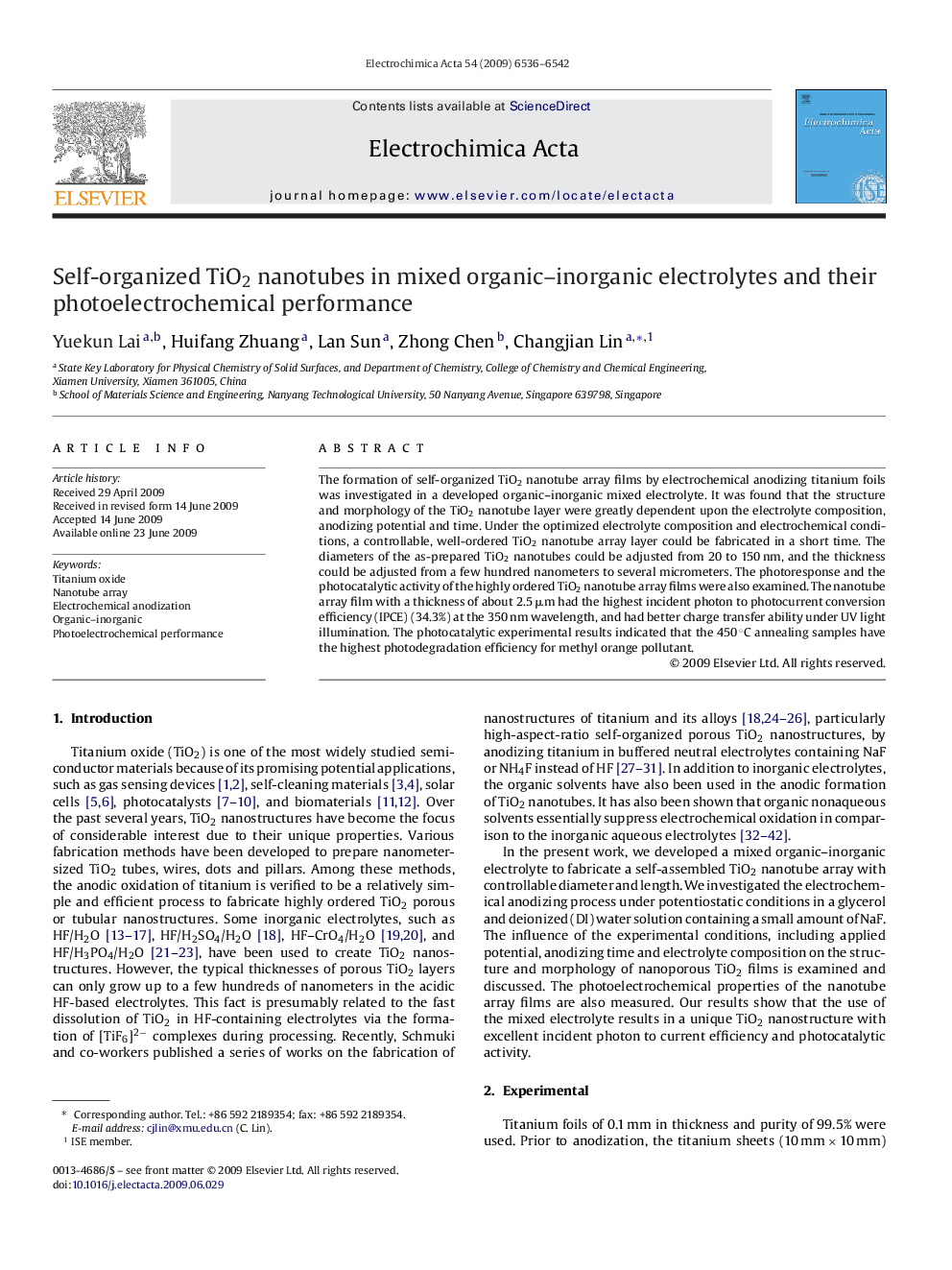| Article ID | Journal | Published Year | Pages | File Type |
|---|---|---|---|---|
| 193233 | Electrochimica Acta | 2009 | 7 Pages |
The formation of self-organized TiO2 nanotube array films by electrochemical anodizing titanium foils was investigated in a developed organic–inorganic mixed electrolyte. It was found that the structure and morphology of the TiO2 nanotube layer were greatly dependent upon the electrolyte composition, anodizing potential and time. Under the optimized electrolyte composition and electrochemical conditions, a controllable, well-ordered TiO2 nanotube array layer could be fabricated in a short time. The diameters of the as-prepared TiO2 nanotubes could be adjusted from 20 to 150 nm, and the thickness could be adjusted from a few hundred nanometers to several micrometers. The photoresponse and the photocatalytic activity of the highly ordered TiO2 nanotube array films were also examined. The nanotube array film with a thickness of about 2.5 μm had the highest incident photon to photocurrent conversion efficiency (IPCE) (34.3%) at the 350 nm wavelength, and had better charge transfer ability under UV light illumination. The photocatalytic experimental results indicated that the 450 °C annealing samples have the highest photodegradation efficiency for methyl orange pollutant.
